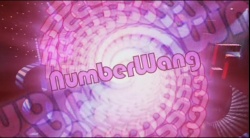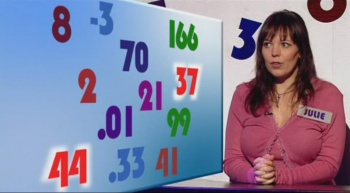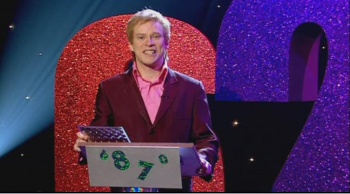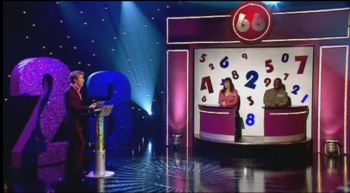NumberWang
Synopsis
With the proliferation of Sudoku formats, it was only a matter of time before one of them was tried out on prime time BBC. And so here we are with NumberWang.
Unlike the more complicated mathematical games, the rules are extremely simple. Two members of the public compete to be the first to complete a NumberWang, with each game lasting a few moves each. Perhaps it's easiest if we explain the rules by giving an example game:
- A: 3
- B: 9
- A: 16
- B: 12
- A: 8.2
- B: 4
- Host: That's NumberWang!
After a couple of warm-up rounds, we move to the Numbers board where the contestants have to select a combination of numbers that, in themselves, consist of a NumberWang. However, the twist here is that the numbers you ask for are in themselves NumberWanged, so you really have to think ahead. The graphics here are quite pleasing and well done for a low-budget show. Later in this round, you have to complete a mathematical statement using numbers from the board. If the contestant hits on the secret bonus, you get a Triple NumberWang.
When the hooter goes, the board revolves in the manner of Turnabout and we play WangerNumb. This is a tense head-to-head where you have to force your opponent to cause a WangerNumb. The first one to do wins and becomes the NumberWang for the day.
Robert Webb does a good job at keeping the pace going. In fact, at some points the speed might mean that those who don't get the NumberWang principle could find it a bit difficult to follow.
Nevertheless, this is a solid but simple quizzer with a decent turn of pace on the BBC at prime time, and that has to be welcomed. Hopefully a full series will follow soon.
Catchphrases
"That's NumberWang!"
Inventor
David Mitchell and Robert Webb





